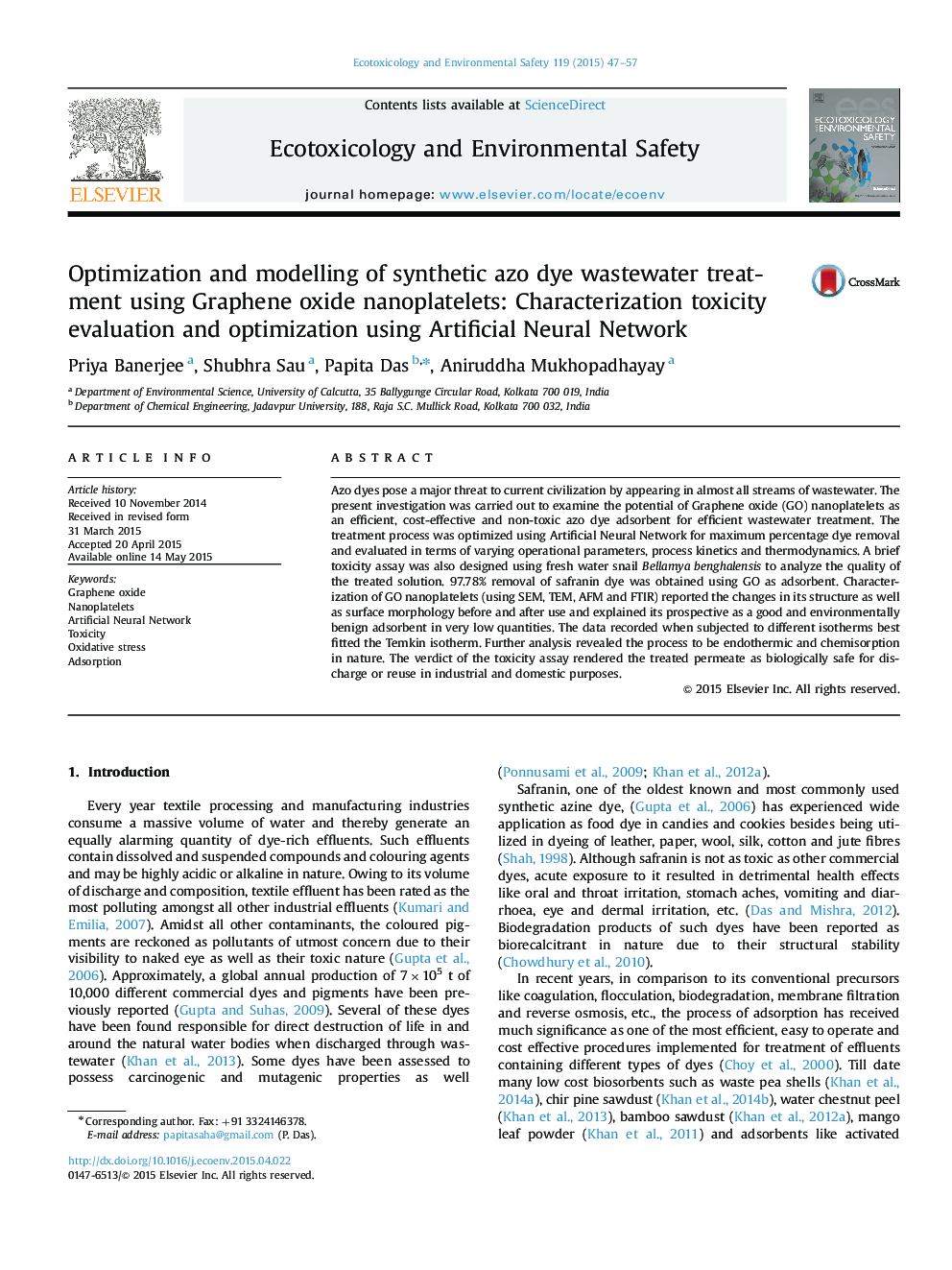| کد مقاله | کد نشریه | سال انتشار | مقاله انگلیسی | نسخه تمام متن |
|---|---|---|---|---|
| 4419626 | 1618944 | 2015 | 11 صفحه PDF | دانلود رایگان |
• GONPs proved to be an efficient, inexpensive and non-toxic adsorbent of basic dye.
• The treatment process was successfully optimized using Artificial Neural Network.
• Adsorption best fitted Temkin Isotherm & was guided by pseudo 2nd order kinetics.
• Adsorption was spontaneous, endothermic and chemisorption in nature.
• Toxicity assay suggested that treated permeate was biologically safe for discharge.
Azo dyes pose a major threat to current civilization by appearing in almost all streams of wastewater. The present investigation was carried out to examine the potential of Graphene oxide (GO) nanoplatelets as an efficient, cost-effective and non-toxic azo dye adsorbent for efficient wastewater treatment. The treatment process was optimized using Artificial Neural Network for maximum percentage dye removal and evaluated in terms of varying operational parameters, process kinetics and thermodynamics. A brief toxicity assay was also designed using fresh water snail Bellamya benghalensis to analyze the quality of the treated solution. 97.78% removal of safranin dye was obtained using GO as adsorbent. Characterization of GO nanoplatelets (using SEM, TEM, AFM and FTIR) reported the changes in its structure as well as surface morphology before and after use and explained its prospective as a good and environmentally benign adsorbent in very low quantities. The data recorded when subjected to different isotherms best fitted the Temkin isotherm. Further analysis revealed the process to be endothermic and chemisorption in nature. The verdict of the toxicity assay rendered the treated permeate as biologically safe for discharge or reuse in industrial and domestic purposes.
Figure optionsDownload as PowerPoint slide
Journal: Ecotoxicology and Environmental Safety - Volume 119, September 2015, Pages 47–57
